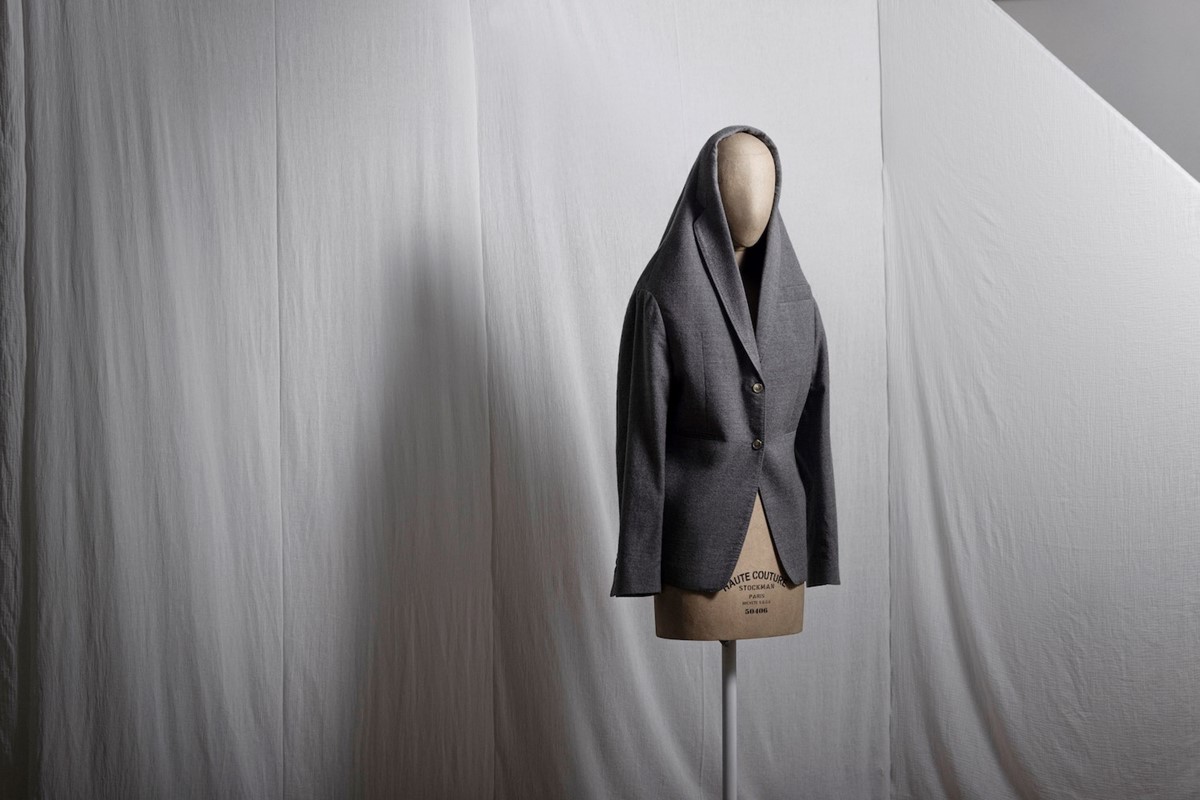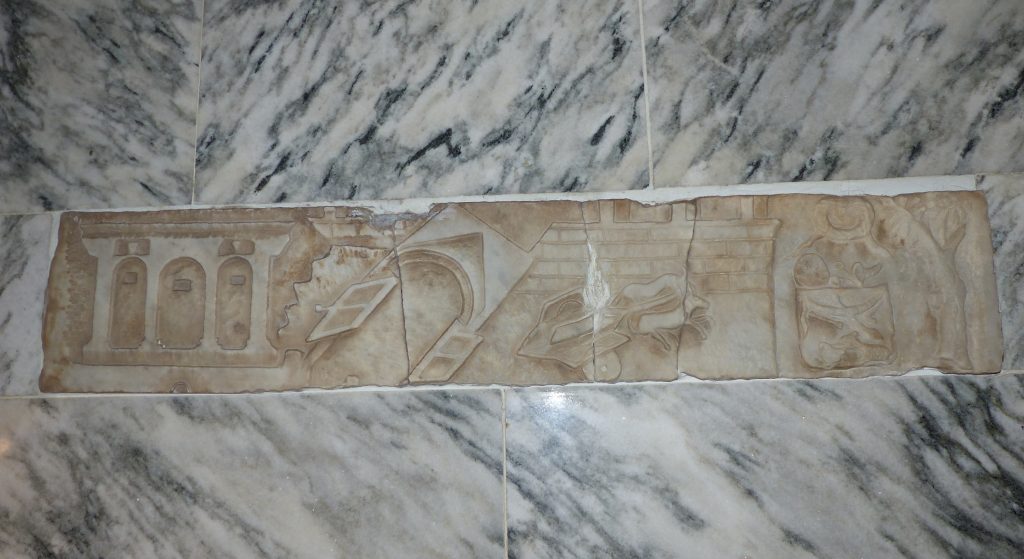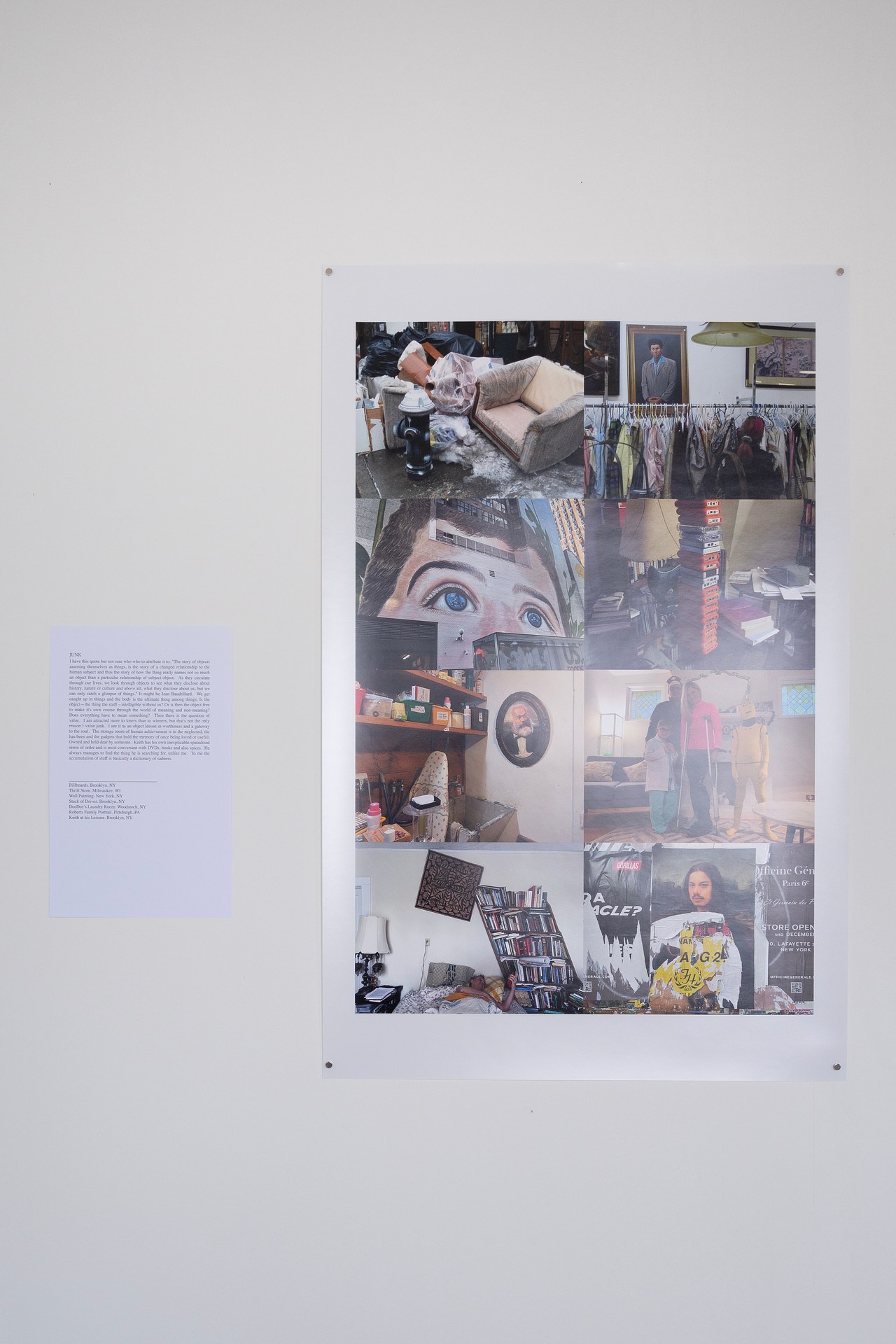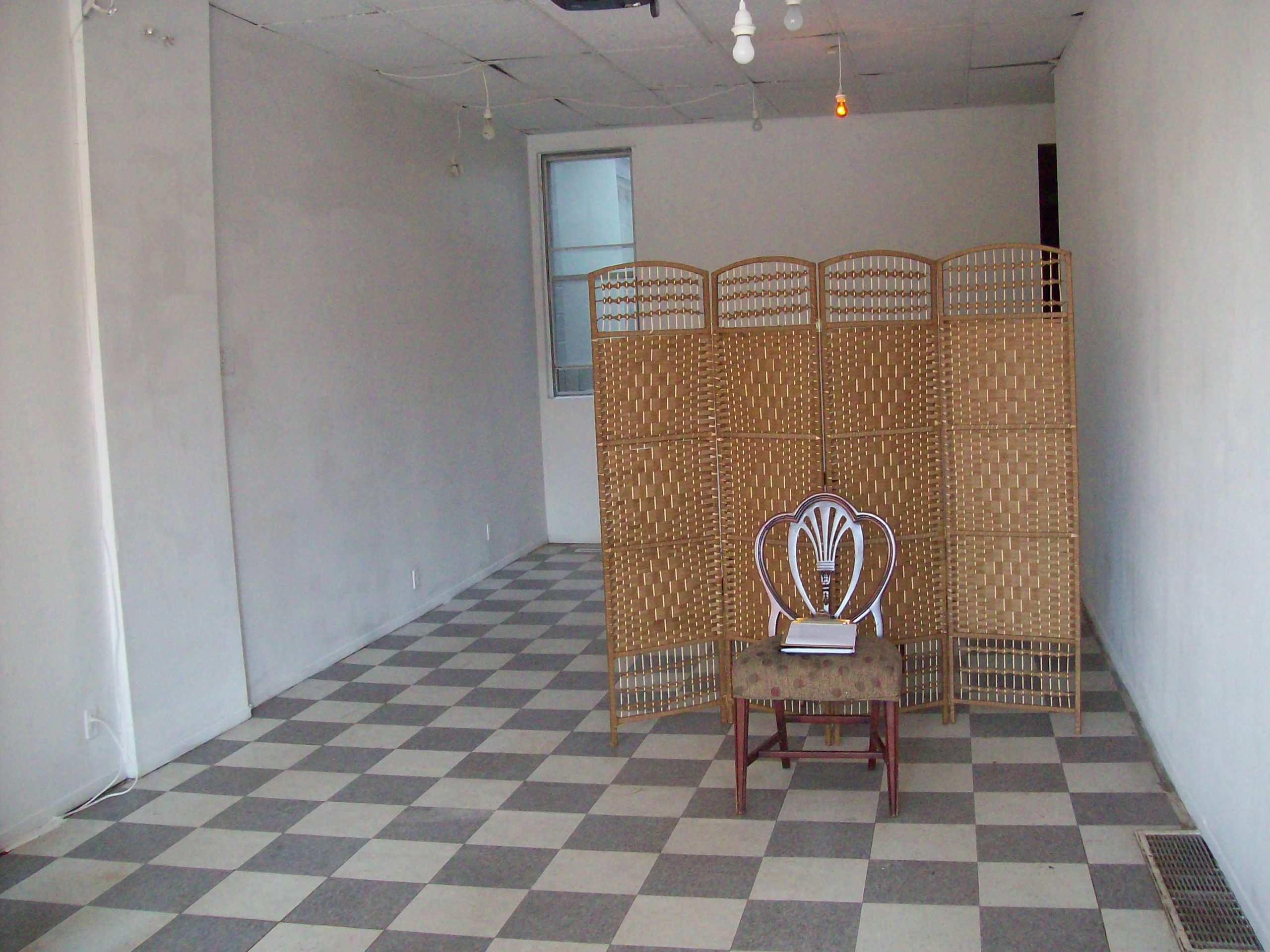Maqe II
2001 - Photography (Photography)
121,3 x 121,3 cm
Tracey Rose
“Maqe II” is at first glance a romantic image of three diaphanous angels hovering in the luminous sky over a South African township. A closer inspection reveals that the apparition is the appropriated figure of Marie Antoinette from the artist’s Ciao Bella series (2001) with the addition of a butchered cake. The figure is Rose herself dressed in costumed made of trash bags holding a haunting paper mâché mask. The figure floating above a crossing of two sharp metal traffic barriers and the triple-exposed view of tract houses piled upon one another in a Reconstruction and Development Programme (RDP) settlement evokes an eerie sense of both past and forthcoming catastrophes. The photograph, in conversation to the women referenced in the Ciao Bella Series, adroitly confronts the audience with the legacies of sexual, racial and political oppression. Rose successfully achieves this without tending towards self-conscious sentimentality. Whether the appropriated Marie Antoinette acts as a monarch of the RDP settlement or a symbol of a social system responsible for massive poverty and displacement, “Maqe II” is a significant contribution to the canon in its sophisticated reflection of contemporaneous identity.
Tracey Rose, (b. Durban, South Africa, 1974) is a multimodal performance artist employing photography and video in her subversive oeuvre that traverses post-colonial theory, gender, race and contemporary identity. The artist is known internationally for her interpretations of masterpieces of the western tradition—most notably for her appropriation of Leonardo da Vinci in Ciao Bella (2001) at the 49th Venice Biennale. While the artist has often been touted as offensive in her political directness, Rose’s work contributes to the creation of a contemporary canon of art history, one that is significantly perceptive in the acuteness of identity in the decolonizing process.
Colors:
Related works sharing similar palette

© » HYPERALLERGIC
7 Art Shows to See in New York, February 2024 Skip to content A detail of Apollinaria Broche’s “I Close My Eyes Then I Drift Away” (2023) at Marianne Boesky Gallery (photo Hrag Vartanian/ Hyperallergic ) The short month of February still packs a lot of art in New York City, from a survey of the influential Godzilla Asian American Arts Network to Apollinaria Broche’s whimsical ceramics and Aki Sasamoto’s experimentations with snail shells and Magic Erasers in her solo show at the Queens Museum...

© » KADIST
Judith Hopf
2018Hopf’s works reference the effects that developments in economics and technology have had on our bodily and mental composition...

© » KADIST
Toby Ziegler
2007Wagon Wheel is a work with a fundamental dynamism that derives both from the rotating movement of the elements suspended on poles and the kicking of the legs of the figure...

© » HYPERALLERGIC
New Bedford Whaling Museum Restores Rare Panorama Painting Skip to content Conservation efforts to restore Charles Sidney Raleigh’s “Panorama of a Whaling Voyage” (1878–80) This December, the New Bedford Whaling Museum revealed the groundbreaking restoration of one panel from Charles Sidney Raleigh’s “Panorama of a Whaling Voyage” (1878–80)...

© » KADIST
Teppei Kaneuji
2014In his White Discharge series (2002 to today), arguably his best known works, Kaneuji assembles old toys and plastic scarps into dramatic mounded heaps and covers the surface with white plastic resin, drawing on allusions to landfills, commodity fetishism, and creative repurposing...

© » KADIST
Jorge Julián Aristizábal
2017La Masacre de el Aro (The Massacre of El Aro) by Jorge Julián Aristizábal refers to a massacre in Colombia which occurred on October 22, 1997 in the municipality of Ituango, Department of Antioquia...

© » KADIST
Until It Makes Sense October 15 – December 11, 2011 With: Saâdane Afif – Yto Barrada – Matti Braun – Matthew Buckingham – Peter Friedl – Mario Garcia Torres – Pratchaya Phinthong – Walid Raad Curator: Jean-Marc Prevost The exhibition gathers an ensemble of works from the Kadist collection which remain open to suspensions and to shifts in meaning...

© » KADIST
UuDam Tran Nguyen
2012Like many Asian countries, Vietnam has lost an immense amount of natural environment and rural landscape to economic growth and industrial development...

© » DAZED DIGITAL
Visit a new exhibition shedding light on man of mystery, Martin Margiela | Dazed â¬…ï¸ Left Arrow *ï¸âƒ£ Asterisk â Star Option Sliders âœ‰ï¸ Mail Exit Fashion Round-up …plus all the other fashion news you missed this week, from a new Balenciaga video game to Robyn Lynch’s London exhibition, and Entire Studios’ Selfridges pop-up 15 December 2023 Text Dominic Cadogan Margiela: In the Void 12 Martin Margiela is as much of an enigma today as he was while at the helm of the brand – which he stepped away from in 2009...

© » KADIST
Jonathan Monk
2003Untitled (rolled up) , is an abstract portrait of Owen Monk, the artist’s father and features an aluminum ring of 56.6 cm in diameter measuring 1.77 cm in circumference, the size of his father...

© » KADIST
Étienne Chambaud
2010In 2010, Kadist Art Foundation, David Roberts Foundation and Nomas Foundation successively presented an exhibition of the work of Etienne Chambaud in collaboration with Vincent Normand: The Siren’s Stage / Le Stade des Sirènes...









